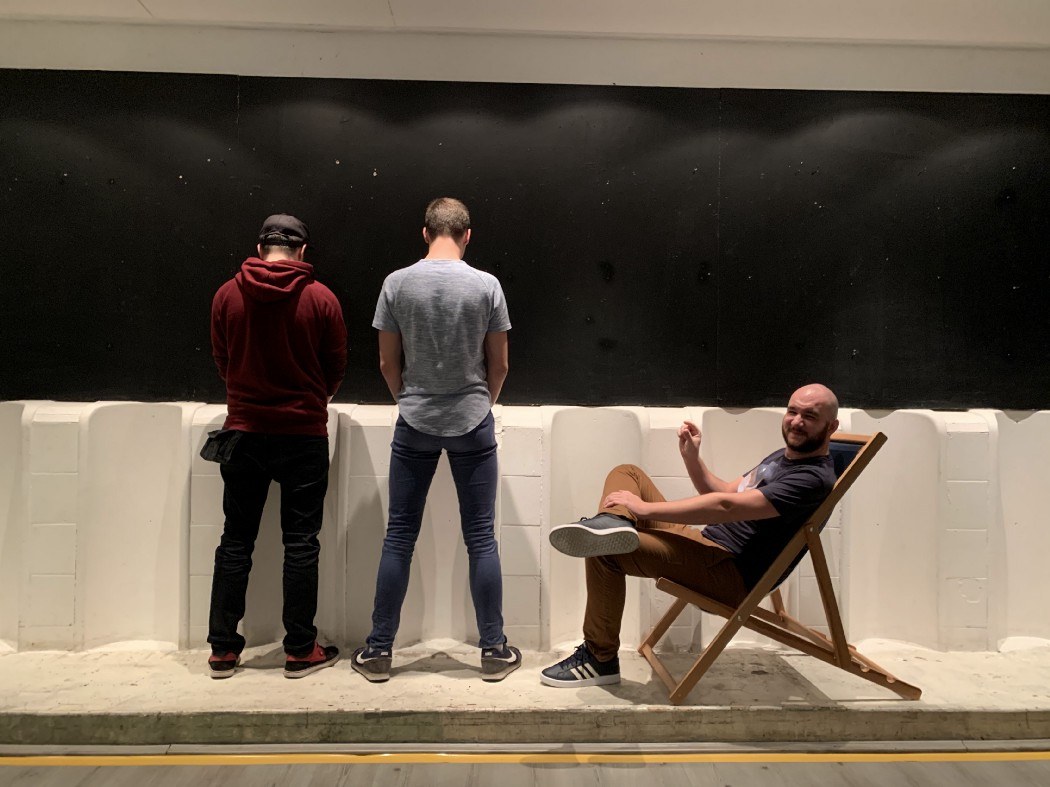October 4, 2019 - 4 min
4 Key Takeaways from the Digital Lab.in Conference

1. Communication, collaboration, critical thinking, and creativity will give you a leg up — regardless of your job description
Merlin Rebrović started the conference by asking the attendees if, “Instead of chasing trends and fads, wouldn’t it be better to focus on knowledge and skills that last for decades or even a lifetime?” — and I, for one, agree.
Little argumentation is needed in favor of collaboration and communication. After all, there are very few tasks or jobs to be done in our lives that can be achieved without other people. It’s common sense that being a skilled communicator and a thoughtful collaborator would make a person better suited to solve problems and life’s great mysteries.
Fact is — Merlin knew his audience pretty well and simplified the matter in a Fallout-themed tl;dr — sometimes you need to up the charisma and perception to level up. And most of the time, these are the skills that carry over to all of your jobs and relationships most eortlessly.
If you still need a push, here are two motivating quotes to focus your growth in these core skills.
“The ability to deal with people is as purchasable a commodity as sugar or coee… And I will pay more for that ability than any other under the sun.” — John D. Rockefeller
The person who has technical knowledge plus the ability to express ideas, to assume leadership, and to arouse enthusiasm among people — that person is headed for higher earning power. — Dale Carnegie
So next time lunch break comes around and ordering food delivery requires calling the restaurant, be the odd person out when suddenly there are hands in the air and a chorus of “not me”.
2. Build a Team
Let’s not lie to ourselves: when we were going to the conference we were pretty sure we weren’t going to get a tip there, so good that it would make the whole “work” part of the job go away.
However, conferences are great at one other thing: teambuilding.
A group of people working together does not necessarily make a team. Having a mutual vision, mutual goals, attending a conference together, and sharing blackmail worthy material — that helps.
Teams need the time and the nourishment to be built — and a little “us” time goes a long way.



3. Take Time to Reflect
While we considered ourselves a good team regardless of our weekend getaway, the design team’s numbers have doubled in the last year and our projects have grown. Q has moved oices and introduced new roles and specialists to improve our eiciency. Amidst all this hustle, it’s hard to see personal growth if you don’t have a moment to look back and see where you were a year ago.
“Reflection turns experience into insight — evaluate your experience.” — 15 Laws of Growth, John C. Maxwell
Q’s entire design team packed their bags and drove away into the sunset for a weekend conference. We had the honor of Jure’s company, a frontend developer who either balanced out our Borg moments, or recorded them. Having a couple of days to re-group as a team and see how far we’d come felt nice. Getting our bearings to plot world domination felt even better.
Truly, taking a step back is sometimes the best way to move forward.
4. Start Conversations
The Digital Lab.in conference proved to be a great way to connect (and re-connect) with our peers. We cross-referenced our processes with other professionals, compared notes on the eiciency of our methods, exchanged book recommendations in the hopes of refreshing our perspectives, and analyzed the dierences (and similarities) of our experiences.
Some of these conversations end up being troubleshooting shortcuts while others are just perfunctory introductions to the main course: sharing cat pictures. (Or, in my case, bizarre numbers of photos of my friend, a German shepherd who spent a rare weekend away from my shadow)

I’ve mentioned the importance of looking back, learning from our experiences, and comparing notes on our progress and current methods. An equally important function of the talks delivered is starting conversations about where it is that we’re going as an industry and how we get to influence that journey.
We argued that “Content is King”, then promptly careened into an era of fake news.
We proved the measurability of our objectives and fell into the trap of user engagement the way Alice fell down a rabbit hole.
If anything, the first step to solving a problem is recognizing there is one. To start conversations.
Design has finally gotten “a seat at the table”. No significant opposition still exists to the idea of design bringing real value to businesses. If anything, now that it’s been so clearly linked to the success (and failure) of companies, it’s become so well monitored, optimized and scrutinized by a long line of managers, analysts, clients and users alike that we find ourselves approaching talking about design as if it’s a science.
And if so, what can we learn from science? How do we avoid the traps of cognitive biases? What are we going to do with this seat at the table we so coveted?
There’s great importance in starting conversations. It’s one of the reasons Q started hosting meetups. Building a community of like-minded people committed to shaping the conversation around the future of our work — it’s something we’d like to do.
Join us on one of our meetups, or just drop us a line and let’s start a conversation 🙂
Give Kudos by sharing the post!






